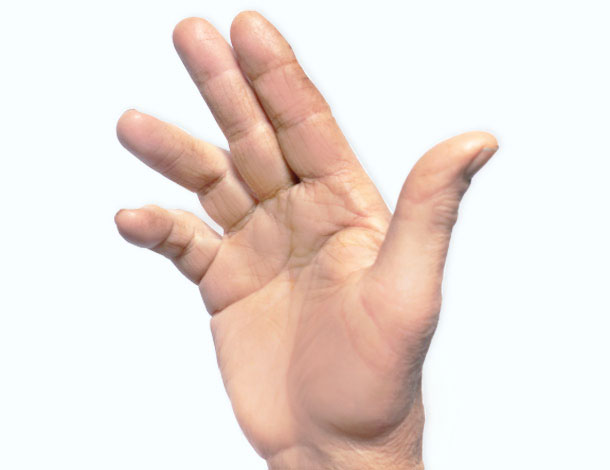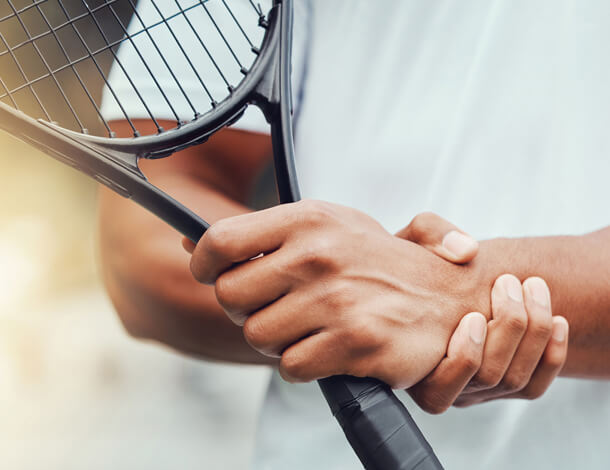Viking Fingers: Are You at Risk for This Progressive Hand Condition?

If you’ve never heard of Viking fingers, you might know it by its medical name: Dupuytren’s contracture.
This condition typically progresses slowly over a matter of years, eventually making it difficult to do daily tasks like driving, typing, or buttoning your shirt.
But what causes this hand condition—and what does it have to do with Vikings?
Keep reading to learn the signs of Dupuytren’s contracture. Plus, find out who is most at risk and how the condition is treated.
What Do Viking Fingers Feel Like?
Dupuytren’s contracture is a hand deformity. It affects the tissue under your finger or palm. The condition is sometimes also referred to as palmar fibromatosis when there is no contracture present.
It is believed that the condition originated with the Vikings and then spread across Northern Europe, which is how it got its unique nickname.
With Dupuytren’s contracture, the tissue in your hand thickens. This forms into a cord that pulls your pinky, middle, or ring finger down toward your palm. It can also affect other fingers including the thumb as well as the webbed spaces between the fingers.
When this happens, you can’t straighten your affected fingers completely. That is why this condition changes how your hands look. It also can make some everyday tasks challenging.
You can get Viking fingers in either hand. However, often one hand is usually more severely affected than the other.
Dupuytren’s Contracture Symptoms
While having Viking fingers usually doesn’t always cause hand pain, there are other symptoms that typically occur with the condition and worsen as it progresses:
- A Lump or Nodule Under the Skin of Your Palm at the Base of Your Ring Finger, Pinky, or Thumb
- Thickening of the Skin of the Palm
- Your Palm’s Skin Appears Puckered or Dimpled
- Difficulty Straightening Your Pinky or Ring Fingers
When diagnosing Dupuytren’s contracture, a hand specialist will compare your hands. They will look for a bend in your fingers or skin puckering.
They may have you put your hand on a table to see if you can lay your fingers flat. They will also press on your hands and fingers to check for those thickened bands of tissue or knots.
Who Is Most at Risk for Viking Fingers?
The causes of Dupuytren’s contracture are unknown, but hand specialists agree there are several factors that increase your risk of the condition, including:
- Gender (Men Have a Higher Risk Than Women)
- Age (Most People Affected Are Over 50)
- Northern European ancestry
- Family History
- Tobacco Use
- Alcohol Use
- Diabetes
Treatment for Dupuytren’s Disease
Your hand specialist may recommend surgery if you have advanced Viking fingers. One sign your condition is serious is if you can’t rest your hand flat on a tabletop.
If your hand isn’t deformed and you haven’t lost any hand function, your hand specialist may delay surgery until it’s necessary.
The medical term for Viking fingers surgery is subtotal palmar fasciectomy.
In this procedure, a hand surgeon removes the contracted palmar fascia from your palm and affected fingers. They also remove diseased hand tissue to prevent further contracture.
Surgeons recommend subtotal palmar fasciectomy to improve hand function.
Non-Surgical Treatments
Newer, less invasive treatments for Viking fingers are also available, including:
- Needle Aponeurotomy
- Collagenase Injection (XIAFLEX™)
Some patients prefer non-surgical treatments. That’s because they offer quicker healing times and less discomfort.
Yet, conservative treatments don’t remove the diseased hand tissue. As such, recurrence rates may be higher for non-surgical care than with surgery.
Get Relief at Indiana Hand to Shoulder Center
The Indiana Hand to Shoulder Center team treats all kinds of hand injuries and conditions—even the most challenging issues.
Regain hand function with help from our world-renowned upper extremity surgeons and prominent hand therapists.
Call us at (317) 875-9105 or schedule an appointment online.

You Might Also Like:
Disclaimer: The materials on this website have been prepared for informational purposes only and do not constitute advice. You should not act or rely upon any medical information on this website without a physician’s advice. The information contained within this website is not intended to serve as a substitution for a thorough examination from a qualified healthcare provider. The display of this information is not intended to create a health care provider-patient relationship between the Indiana Hand to Shoulder Center and you.



